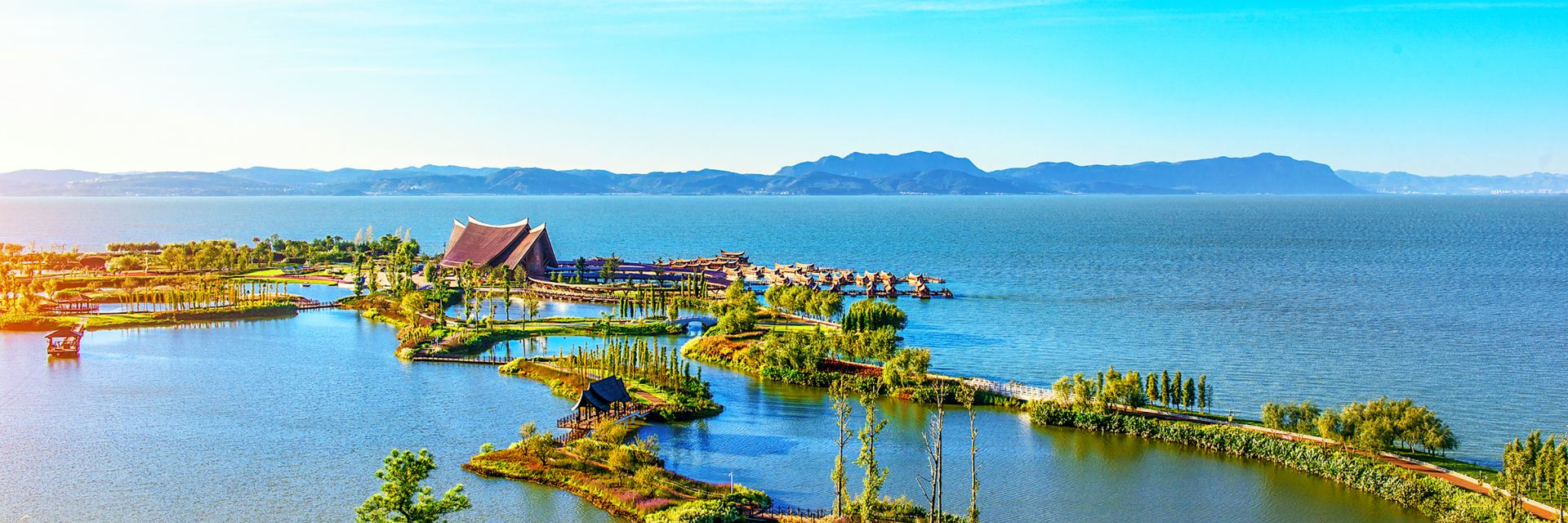
How to Plan Your Scenic Trip to Yunnan: Complete Guide
Hello! This is Martina here! I’ve spent years exploring the captivating landscapes and rich cultural tapestries of Yunnan Province. This region, often called “South of the Clouds”, is truly one of China’s most diverse and rewarding destinations. From majestic snow-capped peaks to lush tropical rainforests, and from ancient towns steeped in history to vibrant ethnic minority cultures, Yunnan offers an unparalleled travel experience. I’ve designed this guide to share my firsthand knowledge and help you craft an unforgettable scenic trip to Yunnan.
Crafting Your Yunnan Itinerary: Where to Begin
Planning a trip to Yunnan can feel a bit overwhelming given its vastness and the sheer number of incredible sights. I always recommend starting with the “golden route” for first-timers, which typically includes Kunming, Dali, Lijiang, and Shangri-La. These cities offer a fantastic blend of natural beauty, cultural immersion, and accessibility.
Kunming: The Eternal Spring City
Kunming, the provincial capital, is often your gateway to Yunnan. Its mild climate, earning it the moniker “Spring City,” makes it a pleasant starting point year-round. While some travelers pass through quickly, I find it offers a gentle introduction to the province’s charm.
Must-See in Kunming: The Stone Forest
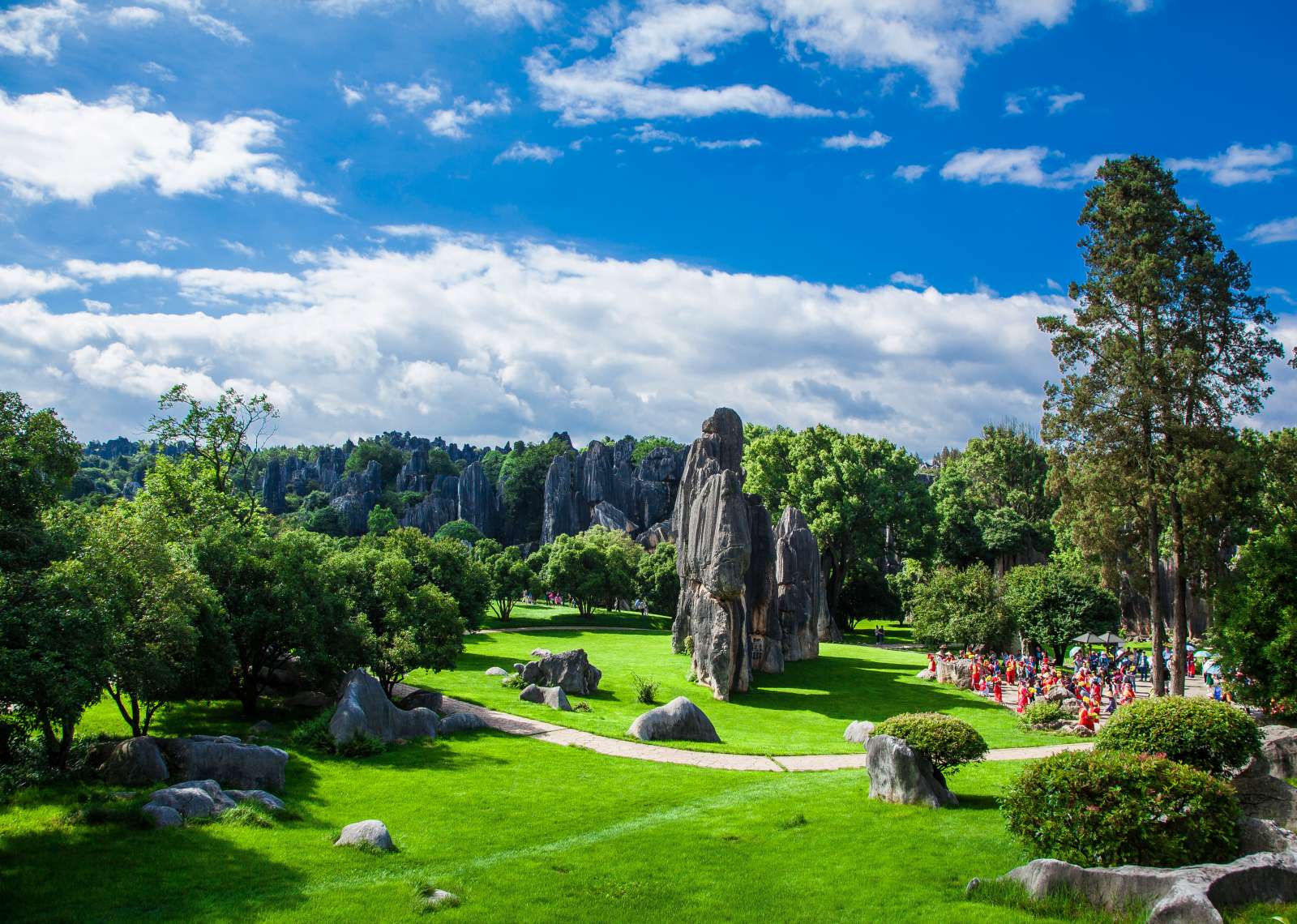
The Stone Forest (Shilin) is an absolute marvel and a UNESCO World Heritage site. This unique karst landscape features towering limestone formations that truly resemble a petrified forest. It’s about a 1.5-hour drive from Kunming, and I highly recommend dedicating at least half a day to exploring its intricate pathways and impressive geological formations. Remember to wear comfortable shoes!
Dali: Ancient Charm by Erhai Lake
From Kunming, Dali is easily accessible by high-speed train. Dali offers a more relaxed pace than Kunming, with its beautiful ancient city nestled between the majestic Cangshan Mountains and the serene Erhai Lake. It’s a fantastic place to experience the culture of the Bai ethnic group.
Exploring Dali’s Highlights
- Dali Ancient City, nestled between the majestic Cangshan Mountains and the sparkling Erhai Lake, is a living museum of Bai ethnic culture and history. Stroll along its cobblestone streets lined with traditional Bai-style houses adorned with intricate wood carvings and marble decorations. The bustling Foreigner Street buzzes with quaint cafes, artisan shops, and lively bars, blending ancient charm with modern vibrancy. Climb the ancient city walls at dusk for panoramic views of red-tiled rooftops against a backdrop of misty peaks.
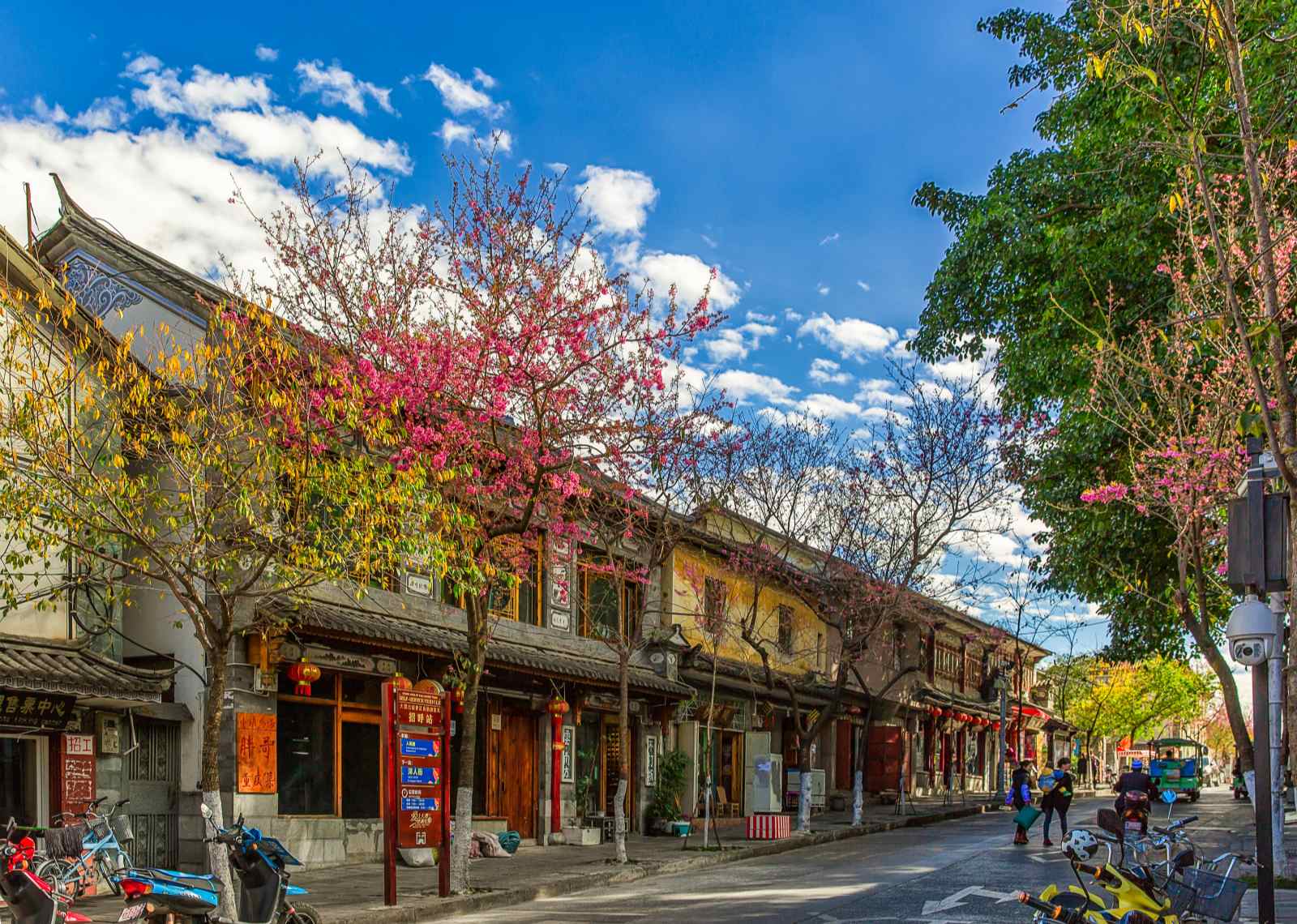
- Erhai Lake Cycling offers one of Yunnan’s most enchanting experiences, where azure waters meet emerald fields under vast open skies. Rent a bike and glide along the lakeside trail from Longkan Pier to Haisheshan Park, passing sleepy fishing villages, golden rapeseed fields, and traditional Bai minority homes with painted eaves. Fresh breezes carry the scent of wet grass as local fishermen mend nets and farmers tend to crops. Stop at a lakeside café for a cup of Yunnan coffee while soaking in views of floating clouds and distant Cangshan peaks. Whether at sunrise or sunset, this leisurely ride immerses you in Erhai’s serene beauty and the rhythms of rural life.
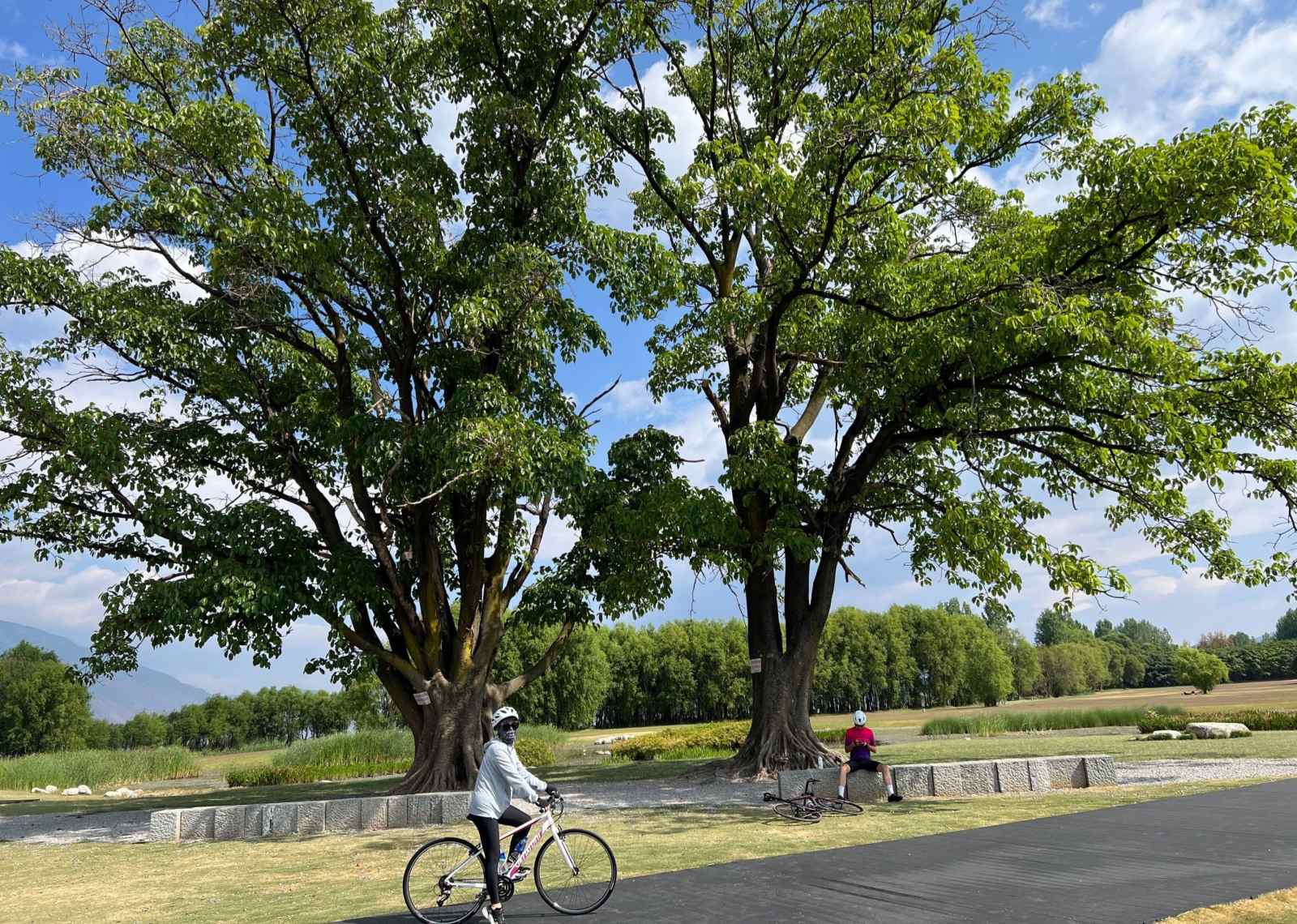
- The Three Pagodas of Chongsheng Temple, standing majestically against the backdrop of Cangshan Mountain, are among Dali’s most revered landmarks. Dating back over 1,000 years to the Tang and Song dynasties, these towering structures showcase exquisite ancient architecture and Buddhist heritage. The central Qianxun Pagoda, flanked by two smaller pagodas, reflects elegantly in the temple’s serene ponds, creating a picture-perfect scene. Wander through the temple complex to admire intricate carvings, tranquil courtyards, and distant views of Erhai Lake. At sunset, the golden glow on the pagodas’ weathered bricks makes for an unforgettable sight, connecting visitors to Dali’s spiritual past and enduring beauty.
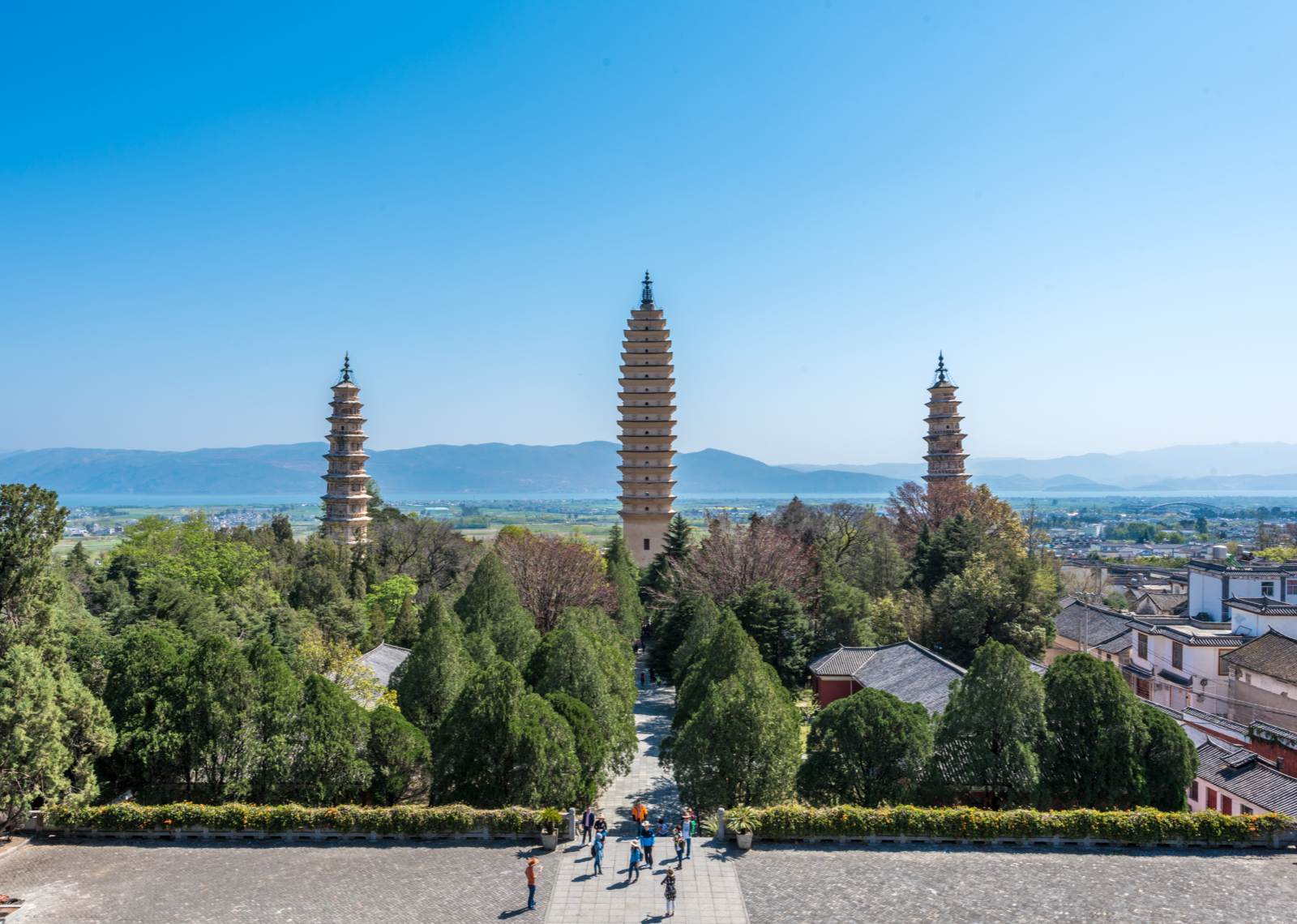
Lijiang: A UNESCO World Heritage Gem
Lijiang, with its Old Town recognized as a UNESCO World Heritage site, is a must-visit. The intricate canal system, traditional Naxi architecture, and cobblestone streets create a truly enchanting atmosphere. It can get crowded, especially during peak seasons, so I often suggest visiting early in the morning or late in the evening to experience its quieter side.
Lijiang’s Iconic Sights
- The Old Town of Lijiang, a UNESCO World Heritage Site, enchants visitors with its timeless charm. Meander through cobbled alleyways lined with traditional Naxi wooden houses, their tiled roofs adorned with whimsical stone carvings. The sound of gurgling streams accompanies your stroll past quaint teahouses, silver workshops, and dongba script calligraphy studios. At its heart, the iconic Square Street buzzes with lively markets and impromptu folk performances. As dusk falls, lanterns cast a golden glow on the ancient architecture, while the distant Jade Dragon Snow Mountain stands sentinel over this living museum of Naxi culture.
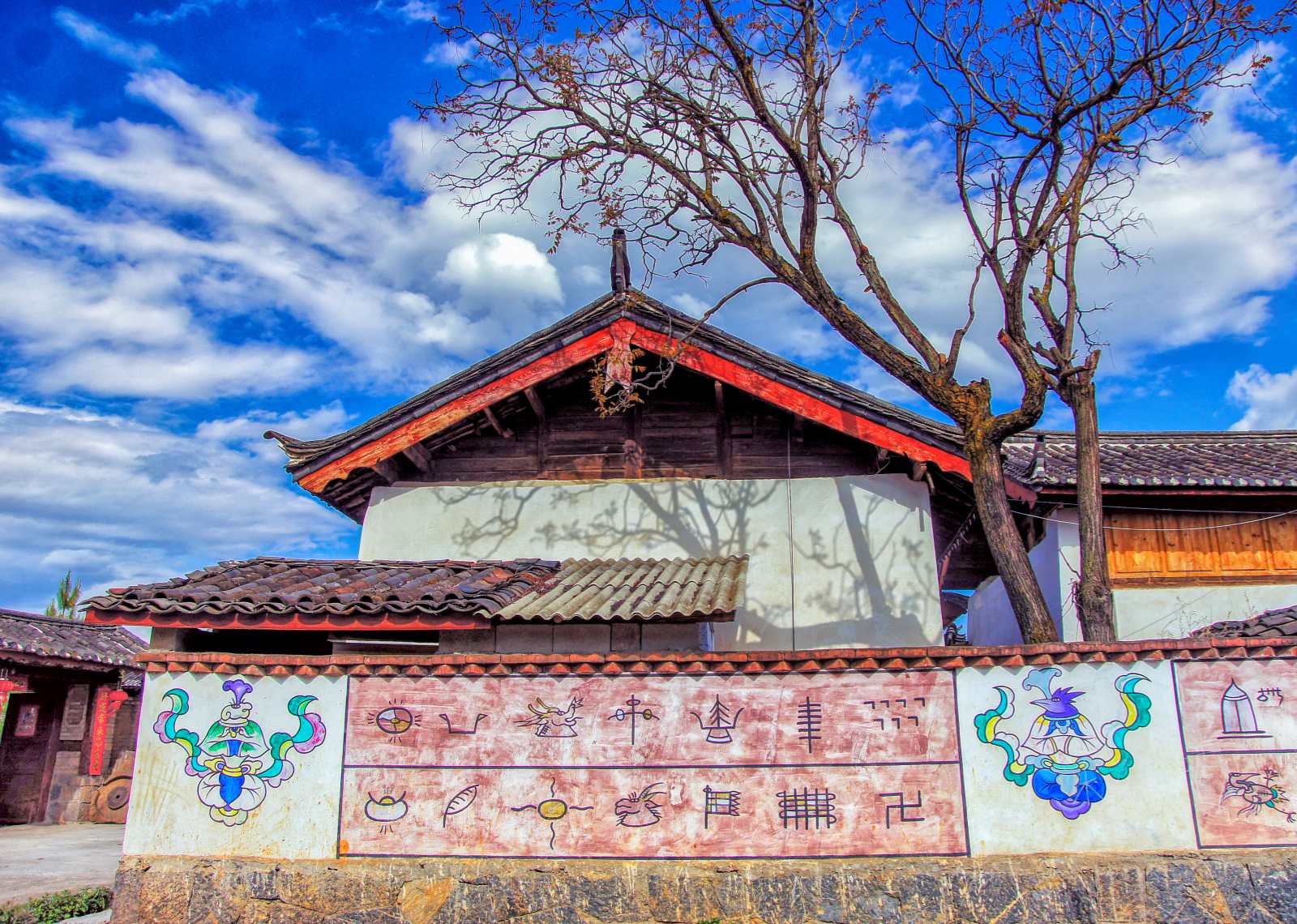
- Jade Dragon Snow Mountain: This majestic snow-capped mountain range is a breathtaking backdrop to Lijiang. You can take a cable car up to Glacier Park, Spruce Meadow, or Yak Meadow for stunning views. The “Impression Lijiang” show, set against the mountain, is also a spectacular cultural performance.
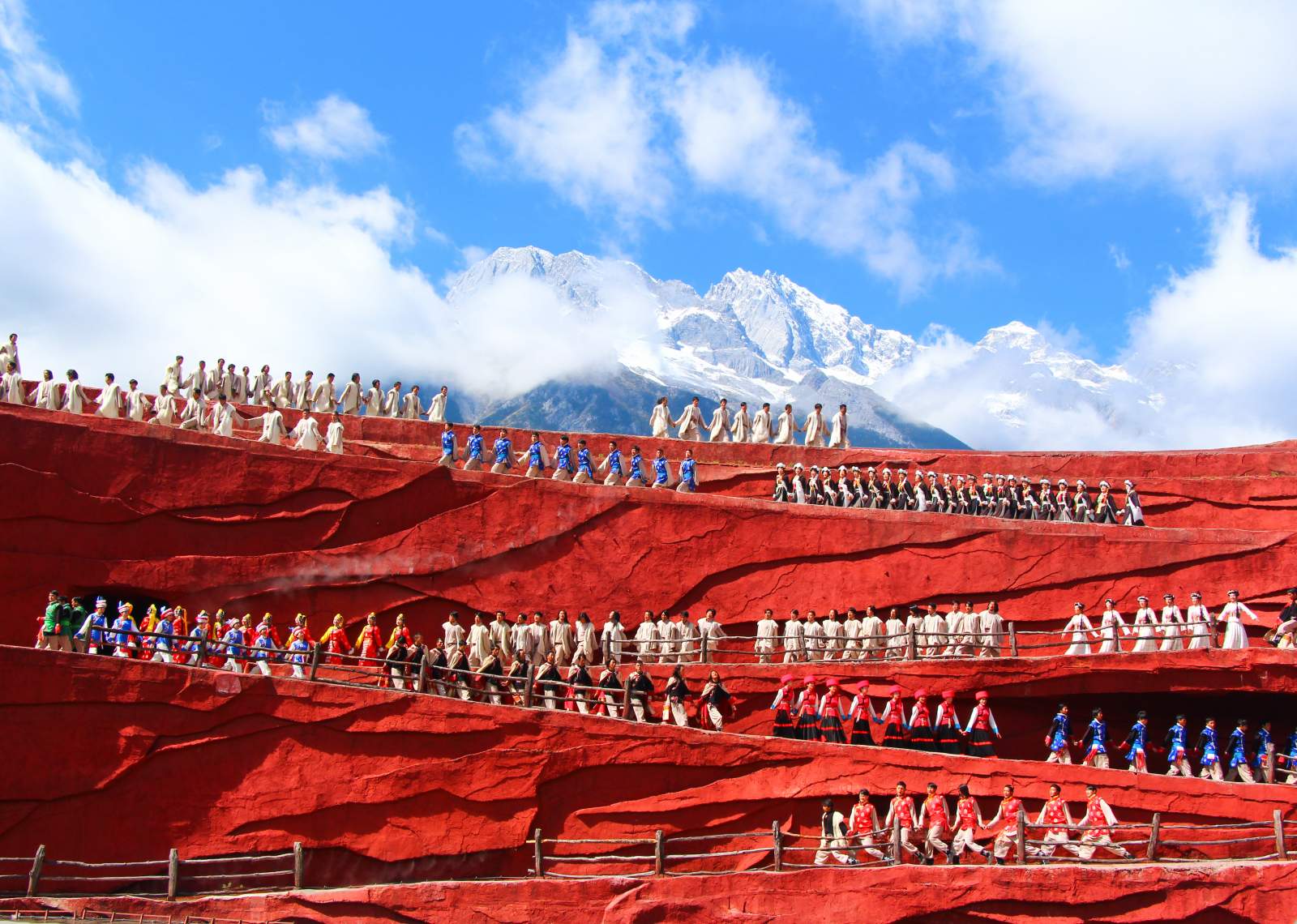
- Blue Moon Valley, nestled beneath Jade Dragon Snow Mountain, dazzles with its surreal turquoise lakes fed by glacial meltwater. The mineral-rich waters shimmer in milky blue hues against a backdrop of snow-capped peaks and lush forests. Wooden walkways wind past cascading waterfalls and tranquil pools, creating picture-perfect views at every turn. This natural wonder’s ethereal beauty makes it one of Yunnan’s most photogenic spots, especially when sunlight dances on the crystal-clear surface.
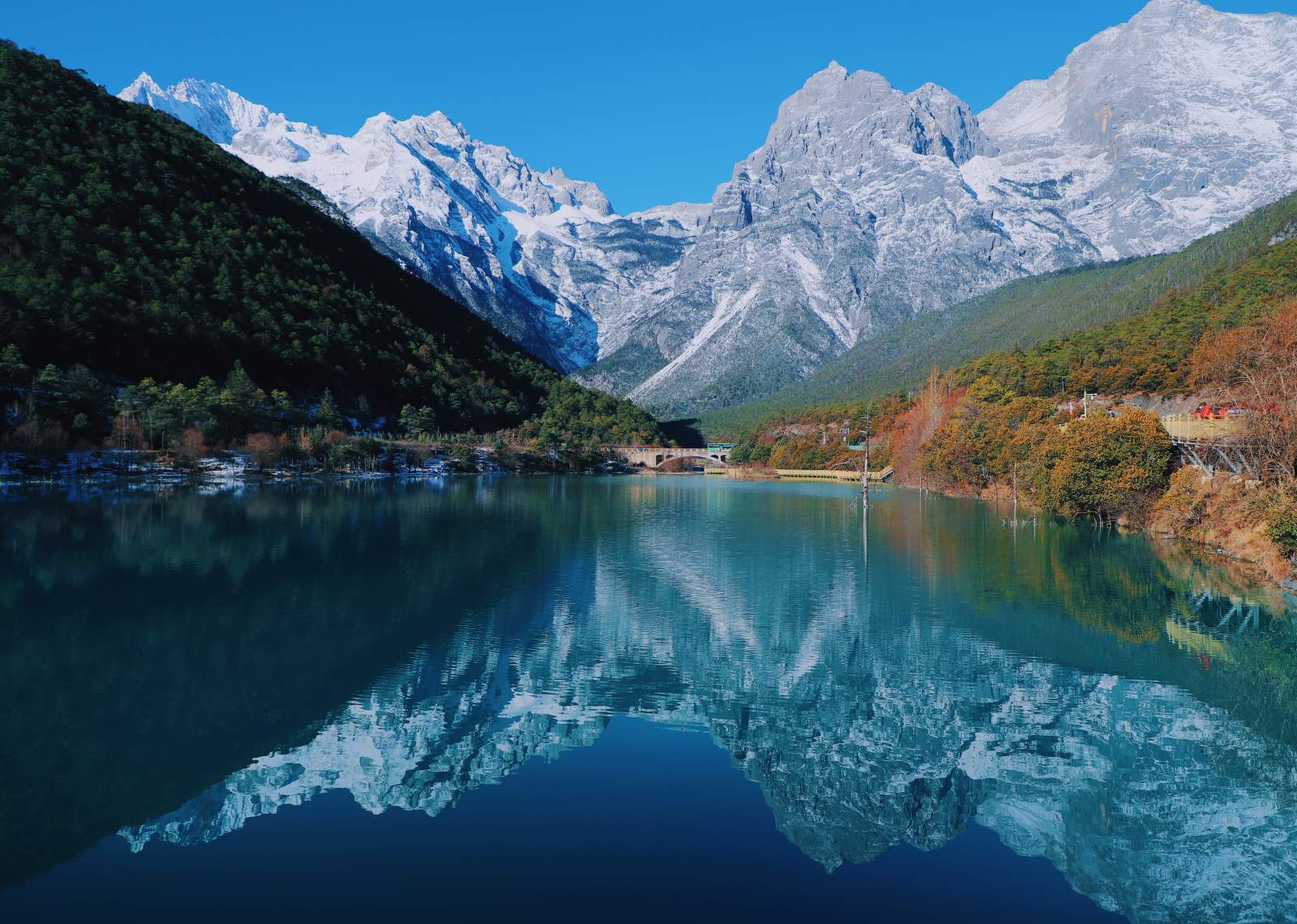
Shangri-La: The Lost Horizon
Further north from Lijiang, you’ll find Shangri-La, an area often associated with James Hilton’s mythical land of “Lost Horizon.” This region offers a distinct Tibetan cultural experience and stunning high-altitude landscapes.
Highlights of Shangri-La
- Ganden Sumtseling Monastery, often called the “Little Potala Palace,” rises majestically amid the Himalayan foothills near Shangri-La. This golden-roofed spiritual sanctuary, founded in 1679, pulses with the rhythm of chanting monks and turning prayer wheels. Wander through its atmospheric halls adorned with intricate thangka paintings and towering Buddha statues, where butter lamps flicker in the alpine air. The monastery’s whitewashed walls and gilded roofs glow against mountain vistas, offering pilgrims and visitors alike a profound connection to Tibetan Buddhist traditions.
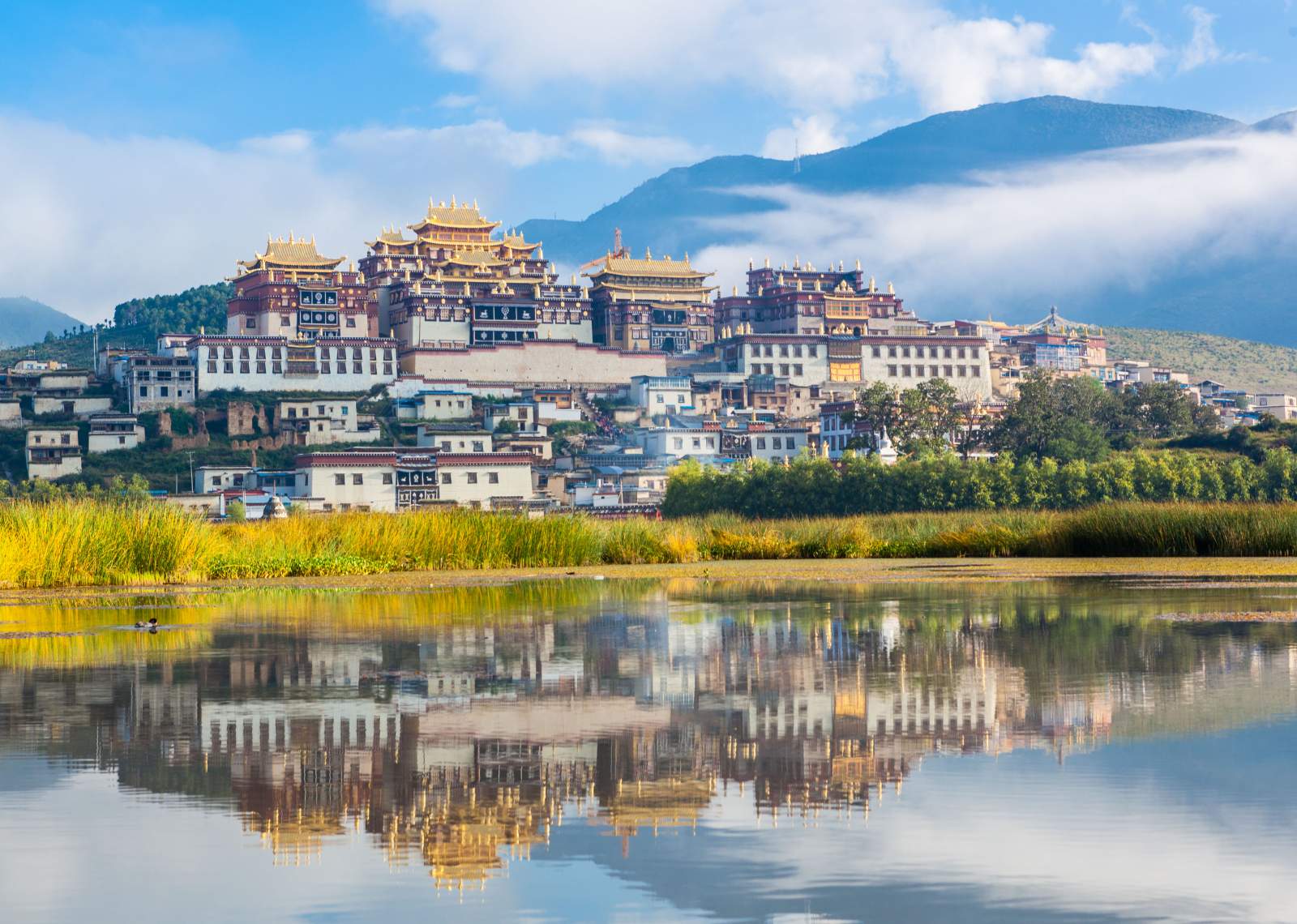
- Pudacuo National Park, China’s first national park, is a breathtaking showcase of untouched alpine beauty. Located near Shangri-La, this ecological wonderland features mirror-like glacial lakes – including the famed Bita Lake and Shudu Lake – whose crystal waters reflect surrounding snow-capped peaks. Wooden boardwalks wind through primeval forests of spruce and fir, where rare species like black-necked cranes and Yunnan snub-nosed monkeys thrive. In spring, vibrant azaleas blanket the valleys, while autumn transforms the landscape into a golden wonderland. Whether hiking along misty trails or simply breathing the pine-scented air, visitors experience nature at its most pristine and powerful.
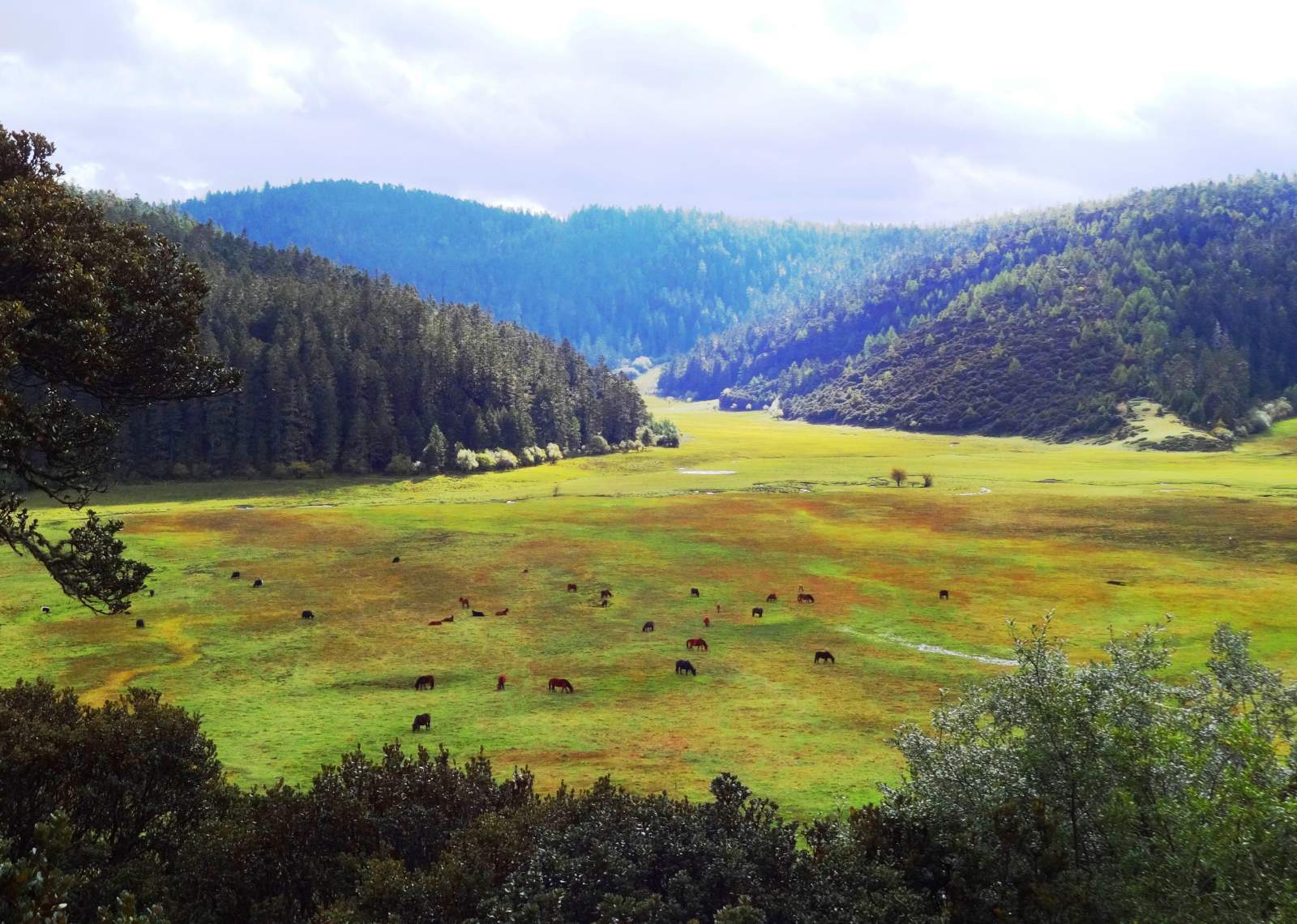
- Dukezong Ancient Town, the largest and best-preserved Tibetan settlement in Yunnan, enchants visitors with its authentic Himalayan charm. Wander through winding cobblestone alleys lined with traditional wooden homes adorned with colorful prayer flags. The town’s centerpiece is the massive 21-meter-tall Golden Prayer Wheel, the world’s largest manually rotated prayer wheel, which pilgrims spin while chanting sacred mantras. Rebuilt after a 2014 fire, Dukezong retains its spiritual atmosphere, with butter lamp-lit shrines, thangka workshops, and breathtaking views of the surrounding mountains. At night, the illuminated prayer wheel casts a golden glow over this living piece of Tibetan heritage.
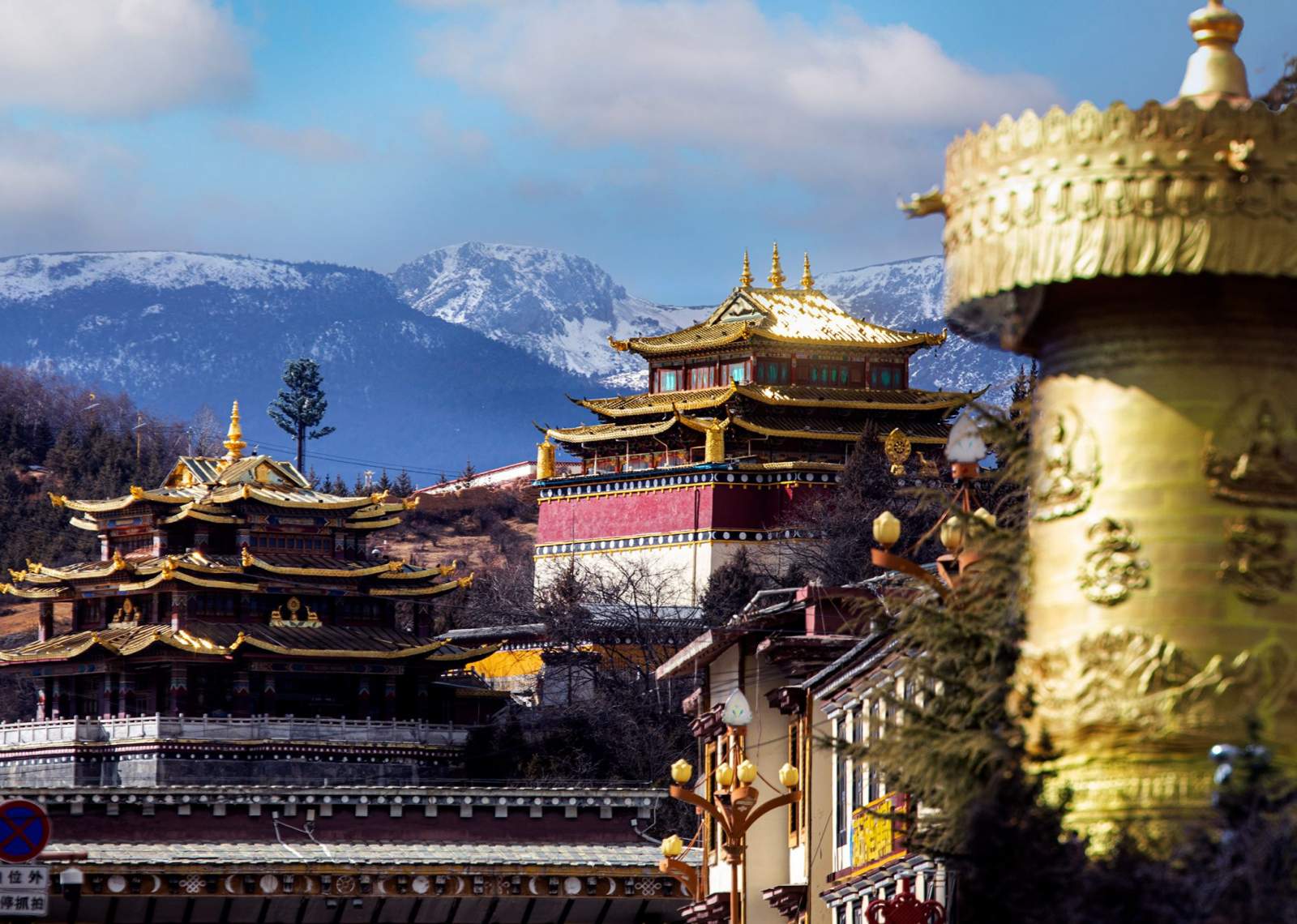
Beyond the Golden Route: Deeper Dives into Yunnan
For those with more time or a desire to explore beyond the well-trodden path, Yunnan offers even more incredible experiences.
Tiger Leaping Gorge: A Hiker’s Paradise
Between Lijiang and Shangri-La lies one of the world’s deepest and most spectacular gorges, Tiger Leaping Gorge. Hiking here is an experience I highly recommend for active travelers. There are various trails, from easy walks to challenging multi-day treks. The views of the Jinsha River roaring through the narrow gorge, flanked by towering mountains, are truly awe-inspiring.

Yuanyang Rice Terraces: A Photographer’s Dream
In the southern part of Yunnan, the Yuanyang Hani Rice Terraces offer a landscape of unparalleled beauty, especially during sunrise and sunset when the terraces reflect the sky. This UNESCO World Heritage site showcases the ingenuity of the Hani people who have sculpted these terraces over centuries. It’s a bit off the main tourist circuit, but absolutely worth the journey for its unique cultural and natural spectacle.
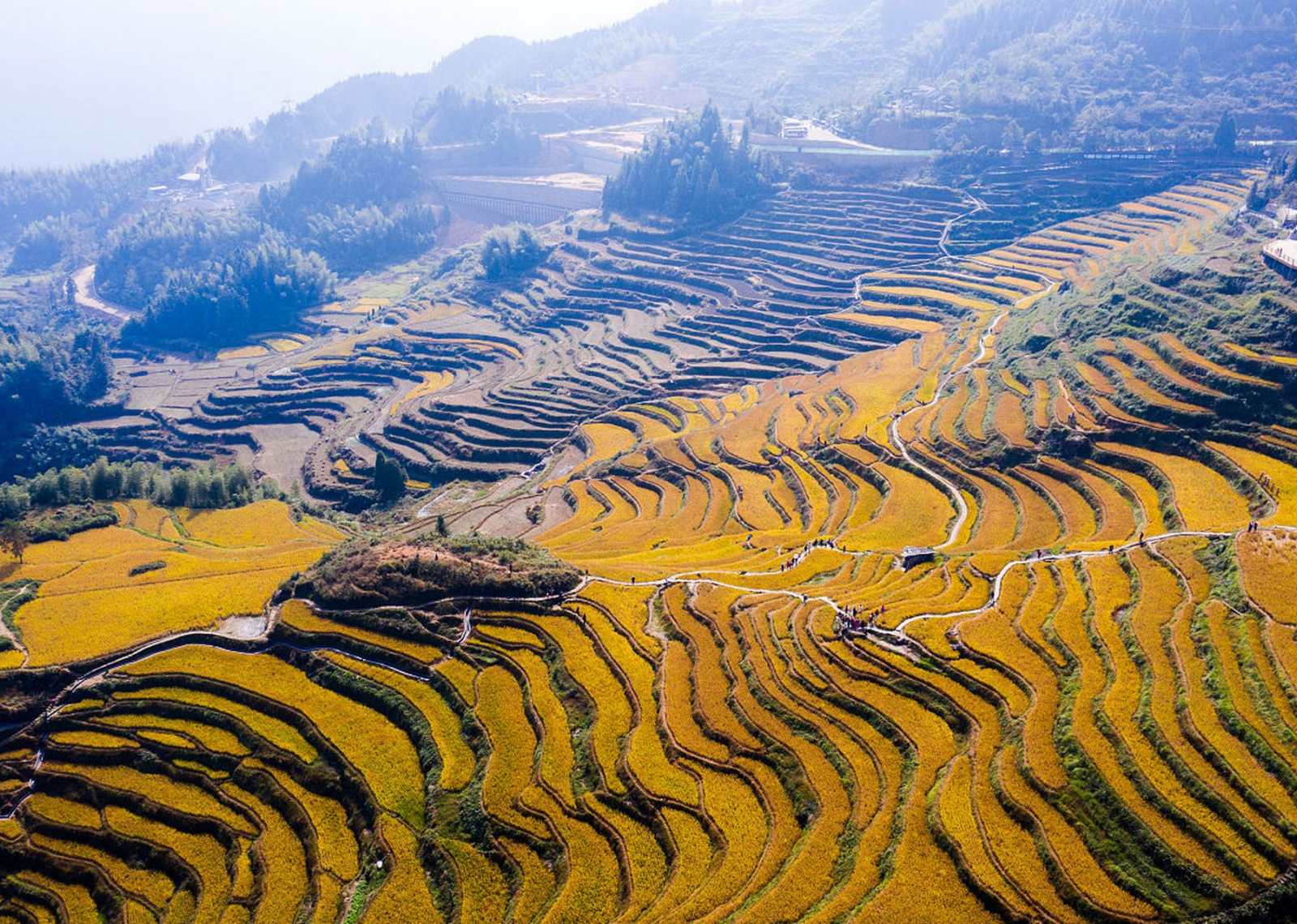
Xishuangbanna: Tropical Rainforest and Dai Culture
If you’re looking for a tropical experience, head south to Xishuangbanna. This region borders Laos and Myanmar and is home to the Dai ethnic group, known for their vibrant culture, traditional architecture, and water splashing festival. You can explore rainforests, botanical gardens, and even see wild elephants here.

Optimizing Your Yunnan Trip: Key Considerations
Best Time to Visit Yunnan
Yunnan generally enjoys a mild climate year-round, but I find the best times to visit are spring (March to May) and autumn (September to November). These seasons offer pleasant temperatures, less rain, and vibrant scenery. September and October are particularly popular as they come right after the rainy season and the peak summer holiday rush. However, be mindful of major Chinese public holidays like Labor Day (May 1st-5th) and National Day (October 1st-7th), when attractions can be very crowded.
Transportation within Yunnan
Yunnan has a well-developed transportation network. High-speed trains connect major cities like Kunming, Dali, and Lijiang, offering a fast and comfortable way to travel. For more remote areas like Shangri-La or Yuanyang, long-distance buses or private transfers (recommended) are common. Domestic flights are also available for longer distances, for example, from Kunming to Shangri-La or Xishuangbanna.
Accommodation and Local Cuisine
You’ll find a range of accommodation options in Yunnan, from boutique hotels in ancient towns to guesthouses and modern hotels in larger cities. As for food, Yunnan cuisine is a delightful fusion of flavors. Don’t miss dishes like ‘crossing the bridge noodles’ (Guoqiao Mixian) in Kunming, Dali’s traditional Bai dishes, and Lijiang’s Naxi specialties. The province is also famous for its Pu’er tea.
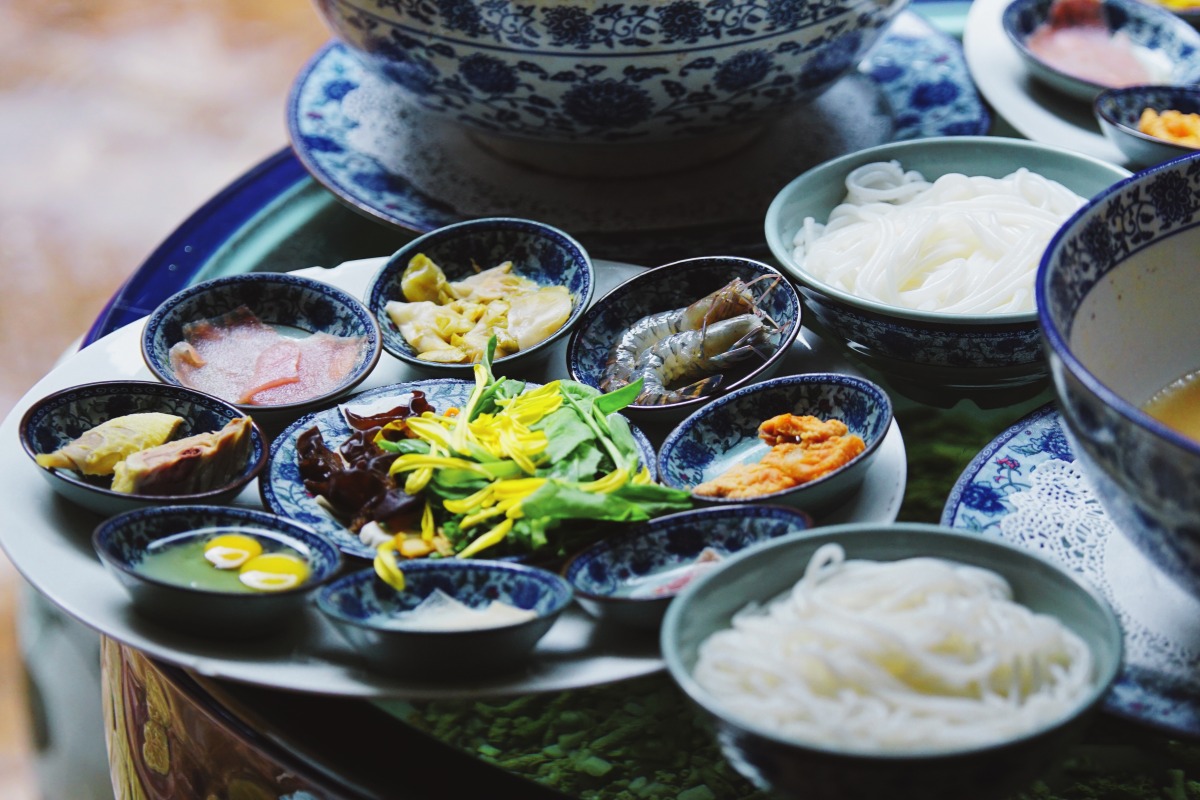

Cultural Sensitivity and Altitude Sickness
Given Yunnan’s rich ethnic diversity, being respectful of local customs and traditions is important. Many communities welcome visitors, and engaging with locals can be a highlight of your trip. For higher altitude areas like Shangri-La (around 3,300 meters or 10,800 feet), be aware of the possibility of altitude sickness. Take it easy on your first day, stay hydrated, and avoid strenuous activities. Consulting with a doctor before your trip about preventative measures is always a good idea.
Essential Travel Table for Yunnan
Here’s a table summarizing key information for the main destinations, which I hope will be useful for your planning:
| Destination | Main Attractions | Recommended Duration | Cultural Focus | Typical Climate |
| Kunming | Stone Forest, Green Lake Park, Yunnan Nationalities Village | 1-2 days | Diverse, Gateway to Yunnan | Mild, “Spring City” |
| Dali | Dali Ancient City, Erhai Lake, Cangshan Mountains, Three Pagodas | 2-3 days | Bai Ethnic Culture | Temperate, Breezy |
| Lijiang | Old Town of Lijiang, Jade Dragon Snow Mountain, Blue Moon Valley | 2-4 days | Naxi Ethnic Culture | Cool, High Altitude |
| Shangri-La | Ganden Sumtseling Monastery, Pudacuo National Park, Dukezong Ancient Town | 2-3 days | Tibetan Culture | Cold, High Altitude |
| Tiger Leaping Gorge | Hiking trails, Jinsha River views | 1-2 days (hiking) | Naxi & Yi (local villages) | Varies by altitude |
| Yuanyang | Hani Rice Terraces (Duoyishu, Bada, Laohuzui) | 2-3 days | Hani Ethnic Culture | Subtropical, Humid |
| Xishuangbanna | Tropical Botanical Garden, Dai Minority Park, Wild Elephant Valley | 2-3 days | Dai Ethnic Culture | Tropical, Humid |
Yunnan is a province that truly captures the imagination. Its “South of the Clouds” moniker perfectly encapsulates the ethereal beauty and diverse experiences it offers. From the historical depth of its ancient cities to the raw majesty of its natural landscapes, and the vibrant tapestry of its ethnic cultures, Yunnan promises a journey filled with discovery and wonder. I hope my insights and recommendations will help you plan your perfect scenic adventure in this extraordinary corner of China. Happy travels!
Recommended Popular Yunnan Tours:
Classic Yunnan Tour: Kunming Dali Shangri-La Lijiang
Private Yunnan Tour: Kunming Dali Shangri-La Lijiang & Lugu Lake